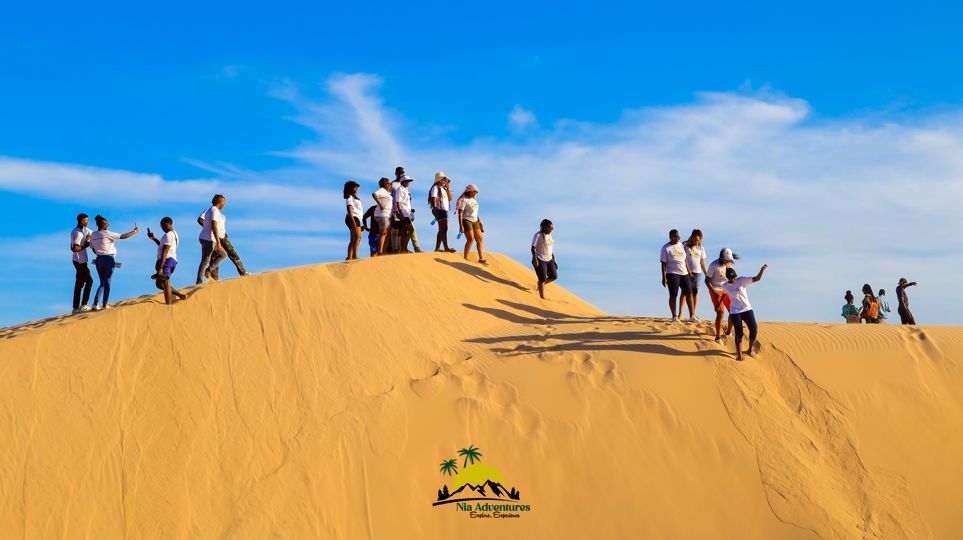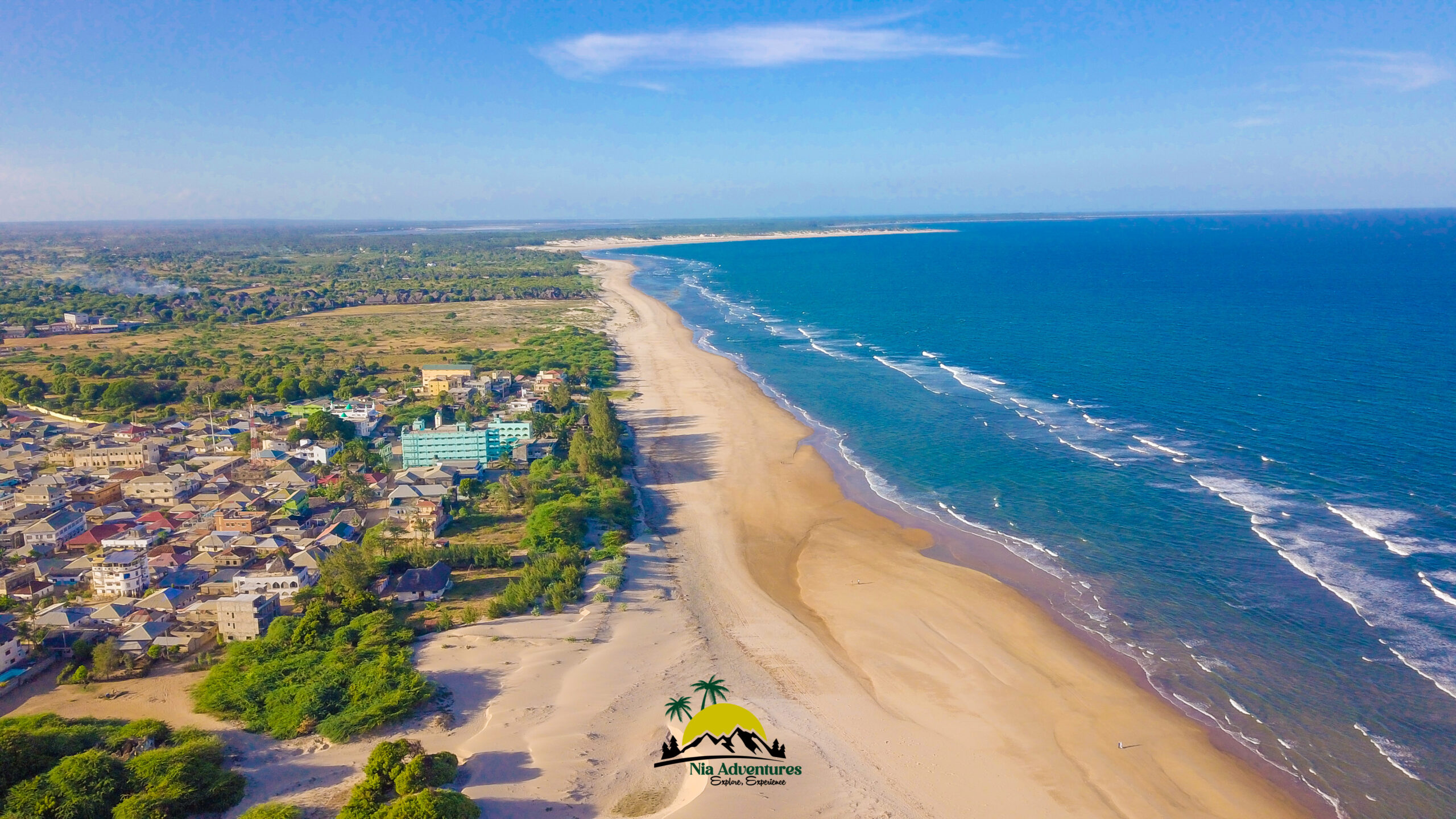
Ever thought of the theory behind the formation of Mambrui sand dunes-located past Malindi
Here’s an overview of the theories behind the formation of the sand dunes:
1. Wind Action:
Wind is a primary agent in the formation and shaping of
sand dunes. Along coastal areas like Mambrui, prevailing winds often blow from the ocean inland. When these winds encounter loose sand on the beach, they pick up and transport sand particles, creating a process known as saltation. As the wind loses energy moving inland, it deposits the sand particles, leading to the accumulation and gradual formation of dunes.
2. Beach Erosion and Sand Supply:
The erosion of coastal rocks and cliffs, as well as the weathering of inland rocks, contribute to the constant supply of sand to the coastal environment. This sediment is transported by rivers (in our case we have Sabaki River), currents, and wave action, eventually reaching the shoreline. Along the coast, various factors such as wave energy, tidal movements, and long shore drift redistribute the sand, leading to the accumulation of sand in certain areas, including where dunes form.
3. Vegetation and Stabilization:
Once sand dunes begin to form, they are further shaped and stabilized by vegetation. Pioneer plants like grasses and shrubs are typically the first to colonize the dunes. Their roots help bind the sand together, preventing erosion and promoting the accumulation of more sand. Over time, as vegetation becomes established, it creates a network of roots and organic matter that stabilizes the dunes and allows for the colonization of more complex plant species. This process of vegetation succession gradually transforms mobile sand dunes into more stable dune ecosystems.
4. Geomorphological Processes:
The shape and morphology of sand dunes are also influenced by various geomorphological processes, including erosion, deposition, and weathering. Factors such as the slope of the coastline, the angle of prevailing winds, and the presence of obstacles like vegetation or man-made structures can all influence the size, shape, and orientation of sand dunes.
In the specific case of Mambrui sand dunes, local geological and climatic conditions, as well as human activities, may have played significant roles in their formation and evolution. Understanding these factors is crucial for effective coastal management and conservation efforts.
Having toured this place a couple of times, let us do justice by leaving a few beautiful images of the dunes to help you understand better and more so add it to your travel bucket list if you are yet to visit. 🤗



